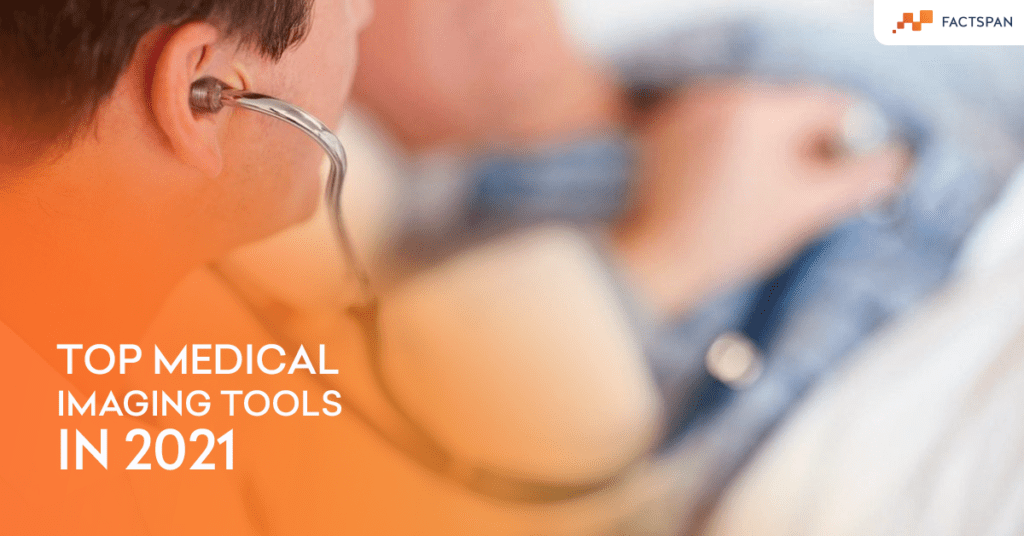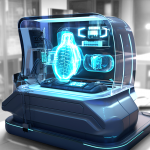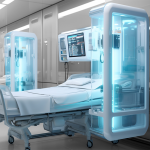Abstract
For many years, medical imaging has been essential in the diagnosis and monitoring of major diseases. Improves the efficiency and value of health services. Medical imaging is the use of many different technologies to generate images of parts of the body, tissues, or organs for clinical diagnosis, treatment, and monitoring of diseases. Technology is changing rapidly in various fields and medical imaging has been positively affected by this technological advance. The development of artificial intelligence (AI) has taken it a step ahead. Artificial intelligence is the use of computer systems to perform tasks that generally require human intelligence. Through deep learning, computers can build a variety of algorithms, which can provide powerful and precise GPU computing for data modeling.
Top AI-powered Medical Imaging tools of 2024

What is AI-based medical imaging?
AI-based medical imaging relies on large amounts of medical case data to train its algorithms to find patterns in images and identify specific anatomical biomarkers. By rigorously analyzing the patterns in a given digital image, the imaging algorithm can derive metrics and results to complement the analysis performed by the radiologist, which is very useful for a quick diagnosis. Advanced medical imaging equipment can process more than 100 high-resolution medical images. The images are very fast and radiologists can now perform unobtrusive evaluations and discover details that are almost impossible to capture with the naked eye.The radiologist can then verify the information obtained and upload it to the electronic medical record (EHR) or the image archiving and communication system (PACS) for future reference. This information can help intermediate providers take appropriate action and help monitor patient response to treatment by providing reports and analysis of relevant clinical and operational data. AI-based medical imaging helps improve accuracy, economic, and patient safety concerns.In addition to making an ideal diagnosis or treatment in time to provide better health outcomes, it can also achieve quality control and efficiency in radiation workflow, and also provides automatic risk stratification, which can be a powerful tool for identifying patients at high risk. So that they can receive specialized and optimized medical services. AI-based medical imaging will most definitely not eliminate radiologists but rather expand the number of radiologists in clinical diagnosis and clinical decision support, helping to reduce the cost of medical errors and accidents.
Top tools in Practice todayAidoc
Aidoc
is developing the most advanced medical-grade AI. This patent-pending technology can analyze all relevant medical images and unstructured clinical data to fully cover the investigation. Aidoc’s “worklist widget” allows radiologists to prioritize admissions based on suspicious findings. Aidoc is built by a team of deep learning experts and seasoned radiologists, to tackle the practical technical challenges of medical image analysis. AIDOC is a medical platform that uses encrypted networks to help users provide various medical services.
4Quant
4Quant uses the latest big data and deep learning technology to extract meaningful and actionable information from images and videos. It involves the entire cycle from experimental design to measurement, analysis, and interpretation. Provides expertise in dynamic and static X-ray imaging experiments, including various samples, from mouse bones to cerebral blood vessels. It can help users design experiments, select imaging methods, scale a large number of samples, and interpret results to obtain high-quality actionable information from image research.
Predible
Predible Health is a Bangalore-based start-up company dedicated to creating cloud software that supports artificial intelligence for radiology. It has automatic segmentation of the liver, surgery planning, and more functions that can be done with just a few clicks. With the click of a button, Predible can perform lung malignancy scoring, nodule tracking, and response evaluation. It combines deep learning and cloud computing capabilities to provide the future of radiology reporting. Malignant tumor scoring can aid non-invasive diagnosis through high-confidence malignant tumor detection and lung CT imaging risk score.EnliticEnlitic creates solutions to help clinicians utilize the collective wisdom of the medical community and use deep learning to extract practical insights from billions of clinical cases.
Enlitic
works with many partners and data sources to jointly develop the most advanced clinical decision support products. Its deep learning technology can integrate a variety of unstructured medical data, including radiological and pathological images, laboratory results (such as blood tests and EKGs), genomics, patient medical history, and electronic health records (EHR). This rich feature can provide each patient with greater precision and deeper insights.
Image Analysis
Image Analysis Inc. specializes in quantitative computed tomography (QCT) bone density measurement and provides calibration dummies and software for key bone density studies, drug evaluations, and multicenter calcium scoring studies. The company is located in Columbia, Kentucky, and provides a software device, N-Vivo, that contains four automated computed tomography (CT) and calibration applications, including coronary and aortic calcium scores, and bone mineral density (BMD). of the spine and hip. Coronary artery calcification scoring products can find smaller plaques than any other detection method, while aortic calcification scoring can provide high sensitivity, high precision, and high precision.
Hon’ble Mentions
Quantitative Approach – Quantitative Insights, ScreenPoint Medical, Volpara Solutions, CureMetrix, Densitas, QView Medical ar, are some top quantitative software for medical imaging.General Tools – Butterfly Network, Lunit, ChironX, Imagia, Innovation Dx, Blackford, Zebra, Behold, Imagen are some of the Top AI-based Medical Imaging – General software.
Bottom Line
Today’s medical imaging technology has come a long way since the dark age of monochrome X-rays, but should we expect continued progress in the way we examine and treat patients? As the trend in medical imaging points to ever-improving technologies and tools, radiologists will make the correct diagnosis easier and more effective than ever. Looking ahead, medical imaging technology can help industry professionals understand how they can prepare for these trends to go mainstream.The use of high-resolution medical-grade displays is the key to viewing the digital results of multiple tests and scans, as well as for use in real-time in surgical operations and other patient diagnostics. Double Black Imaging continues to innovate and strive to ensure that our monitors can take advantage of new technologies while providing the best images available today. The correct high-contrast monitor can help radiologists save time and make more accurate diagnoses, and you can also use the monitor in the operating room to assist the surgeon. Our quality, coupled with first-class customer service and support, make Double Black Imaging displays the best choice for almost all medical applications.
Healing with Algorithms: AI’s Role in Healthcare











